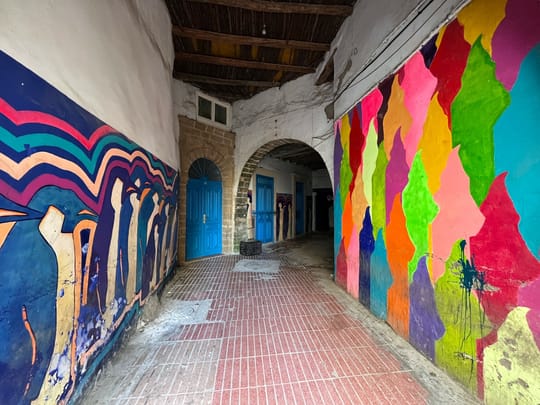Cooperatives in Morocco: Ever-present and ever-complicated

On July 6, the world celebrates the 102nd anniversary of International Cooperative Day, a day which highlights the democratic and sustainable nature of cooperatives as an economic formation. As a country which has prioritized sustainable economic development, Morocco is an interesting case study for better understanding the complexities of cooperatives.
In 2022, there were approximately 27,260 cooperatives in Morocco. Over 66% of these cooperatives are in the agricultural sector, meaning that almost 16% of all Moroccan farms are cooperatively owned and managed. Collectively they employ over 35,000 Moroccans and boast more than 563,000 members. Perhaps most strikingly, 29% of these members are women and more than 14% of all cooperatives are owned and managed entirely by women.
This striking reality is not simply the byproduct of organic, local collective action. Rather, the formation of cooperatives in Morocco has also been a non-governmental and a Moroccan governmental priority. In this way, what is truly remarkable about the nature of cooperatives in Morocco is the way in which this economic formation has been identified as the intersection of many governmental priorities including sustainable development and women’s empowerment. However, the complicated reality of these formations cannot be overlooked in favor of the aspirational nature of these formations.
In 2005, King Mohammed VI launched the National Human Development Initiative, and since its initiation it has undertaken over 22,000 projects including with over 6,000 cooperatives in Morocco. The INDH, in addition to advancing economic development, contained a commitment to the empowerment of women, especially in rural areas. Coupled with the Green Morocco Plan (2008-2020) which invested in agricultural potential and efforts by non-governmental organizations such as the High Atlas Foundation, the result has been an influx of collective-action-based organizations.
Cooperatives, as an economic formation which prioritize democratic action and fair worker treatment, are a complicated phenomenon in development. On the one hand, they work within the constraints of a capitalist economy, meaning that they are not in any way exempt from the pushes and pulls of the market nor the necessity of securing a profit. But on the other hand, they implicitly subvert capitalist economic structures by unequivocally prioritizing the collective over the individual and empowering those whom capitalism marginalizes.
Add in the complexity of gender and these formations become even more complicated. Because cooperatives are based on the collective will of the members, women are theoretically able to have a more prominent role in their management. However, this same reliance on collective will can easily enable entrenched hierarchies which silence and sideline women. In short, cooperatives encapsulate an exceptional amount of potential — potential to subvert problematic structures of dependence and to empower marginalized groups — that seems to often be in tension with the realities of the world. In Morocco, and specifically in relation to the concept of economic development, this tension is perfectly embodied.
The High Atlas Foundation, in undertaking both the empowerment of women and the sustainable development of communities, has supported the emergence of various women’s cooperatives across Morocco. Some of these cooperatives make rugs, others produce argan oil and amalou. All of the women have heart-wrenching and inspiring stories to share about their empowerment and the economic advancement they have experienced. Consider the cooperative in Tiznit. The woman who is now the president of the cooperative spent years building her house by hand with her husband on her lunch breaks. And now she runs a hugely successful cooperative that produces multiple products and supports dozens of women.
This president’s story is one of unbridled success — she is a role model of female power and resilience. And yet, despite the unmitigated success of this cooperative, most of the women still only make 30 dirham a day. Three dollars on which they help to support their families. Three dollars with which they must cope with rampant inflation and little social security. In short, this cooperative has changed these women’s lives but it cannot wholly alter the external forces of globalization, dependence, and increasing economic inequality.
During the COVID-19 pandemic, there was extensive discussion of the radical and subversive nature of cooperatives, a nature which allowed them to persist and even thrive during this unprecedented economic downturn. Moreover, cooperatives have been shown to improve labor standards and foreground democratic decision-making in spaces where capitalistism long dominated. Undoubtedly, this potential is why the government and organizations in Morocco have prioritized the development of cooperatives, a worthy goal. But while the potential of these formations may be exceptionally bright, their lived reality complicates these aspirations.
July 6, as the International Day of Cooperatives, invites the world to celebrate the economically empowering nature of cooperatives while also providing space to interrogate the structural shortcomings which continue to impede their success.
Naima Sawaya is an intern at The High Atlas Foundation and a student at the University of Virginia.